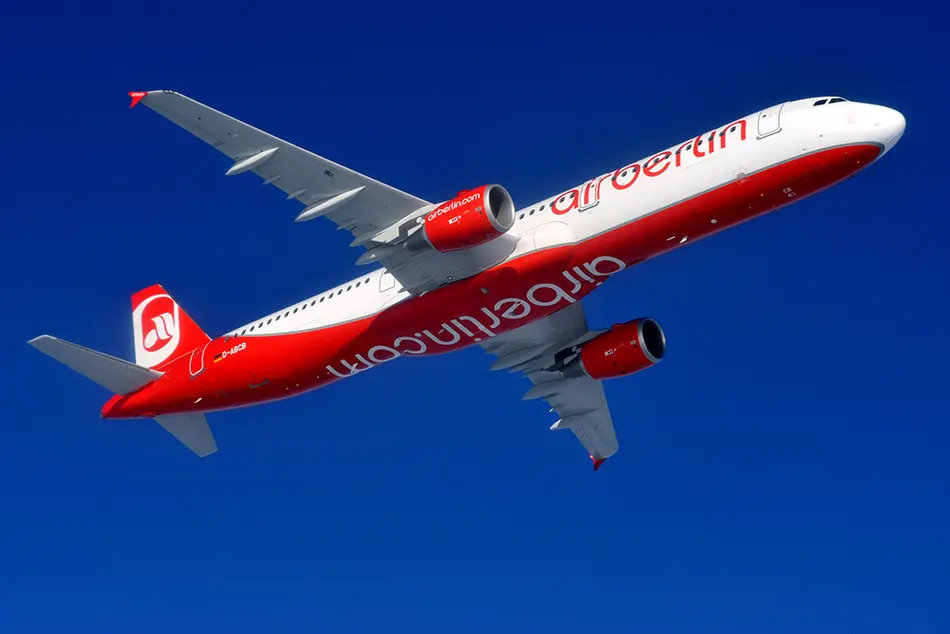Old Business Model and High Restructuring Costs Drive airberlin to Record Loss

TIN news: The business year 2016 and the first quarter 2017 at airberlin were dominated by the transition to a new business model at the airline.
Structural issues of the old business model and high restructuring costs have impacted the reporting periods.
airberlin CEO Thomas Winkelmann said:
“Old airberlin’s indistinct market position, the strongly season-dependent route network and the high operating costs have together led to highly unsatisfactory financial results. The new strategy we launched in autumn 2016 is a major step to turn around the airline’s fortunes. I came on board to develop a focused, cost-efficient network airline away from an unprofitable hybrid carrier. This also now means sounding out new opportunities beyond the existing strategy.”
airberlin CFO Dimitri Courtelis added:
“The first half-year of 2017 will be dominated as was 2016 by the structural challenges of the old airberlin and the high expenditure required to restructure the airline. It is normal that before improvements become noticeable the first phase of a remodeling of this magnitude is enormously difficult.”
The decrease in revenue in 2016 is due primarily to a capacity reduction of 4 per cent and the decline in revenue per passenger (yield) by 3.8 per cent. The threat of terrorism in the eastern Mediterranean region led to excess capacity and an associated fall in prices in the leisure sector. These factors impacted negatively the business results of 2016. As a counter-measure, airberlin expanded its long-haul network, added more XL seats, introduced buy-on-board and launched a new short-haul European business class product. Ancillary revenue grew by a significant 20 per cent in 2016.
The necessary restructuring costs of 334.8 million euros for the transition to the new airberlin saw the EBIT drop to -667.1 million euros in 2016 compared to the previous year. The provisions were made mainly for fleet harmonization to Airbus aircraft and staff, plus consulting services.
The first quarter 2017 is dominated further by the challenging structure of the old airberlin business model. Other external factors have had a negative impact including a ground staff strike at Berlin Tegel Airport and operational limitations of the airline’s new ground service provider, which led to flight cancellations and reductions in capacity.
Mr. Winkelmann said:
“We have a lot of work ahead of us in 2017. Due to the infrastructure limits in Berlin we will focus more strongly on Düsseldorf with our plans to expand further our long-haul route network. The restructuring process of airberlin is up and running and we will now accelerate our pace of change towards the positioning of new airberlin”.
The strategic turnaround for the new airberlin was initiated at the end of 2016. Since then the airline has achieved major progress in three important fields:
- Concentration of its route network on flights within Germany, to major European cities and to more long-haul destinations. airberlin from May 2017 will offer even more connections to the USA. Furthermore, airberlin has adapted its network to the new fleet target size of 75 aircraft and downsized its flight network from 387 to less than 100 routes. The fleet harmonization to Airbus aircraft has been completed.
- A wet-lease agreement with Lufthansa Group for 38 aircraft has developed successfully and 35 aircraft have been moved to date.
- A separation from the ‘sun-seeking’ seasonal tourism business started at the beginning of the airline summer season in March and a total of 35 leisure-dedicated aircraft were transferred to NIKI. The second stage is now pending regulatory approval of a joint venture between Etihad, NIKI and TUI.
Abu Dhabi-based Etihad Airways, which owns just under 30 percent of Air Berlin, insisted that German airline was on the right track.
